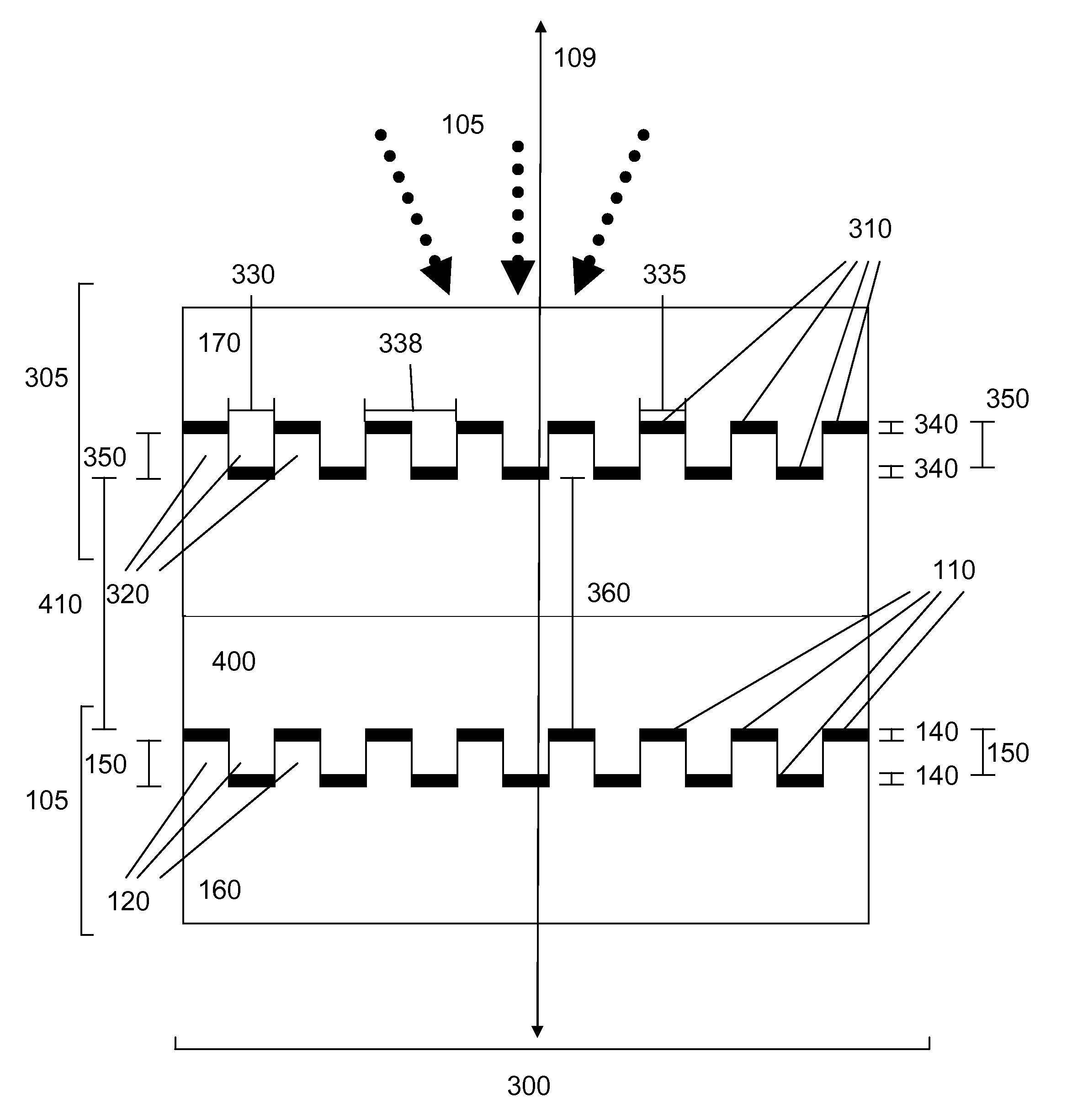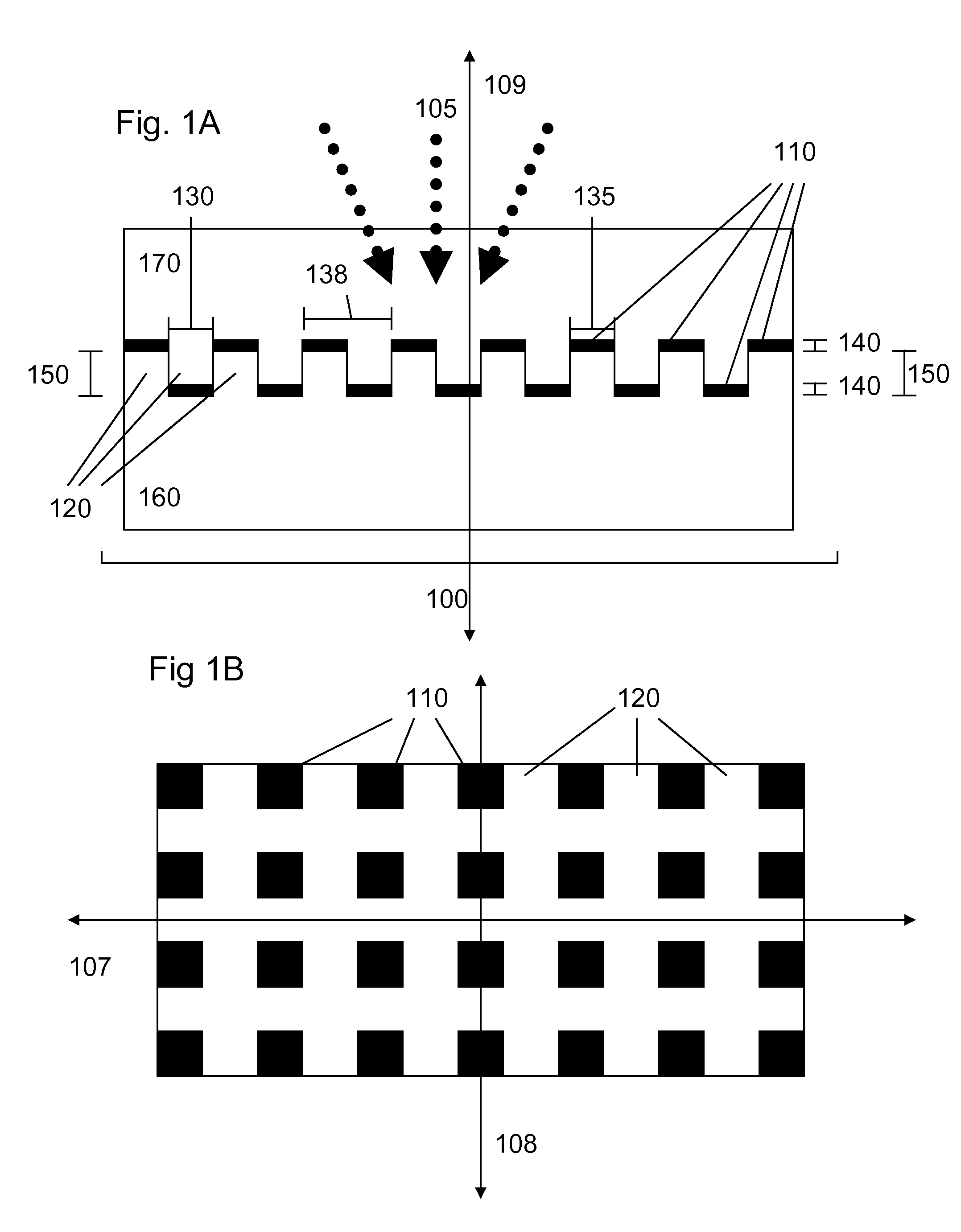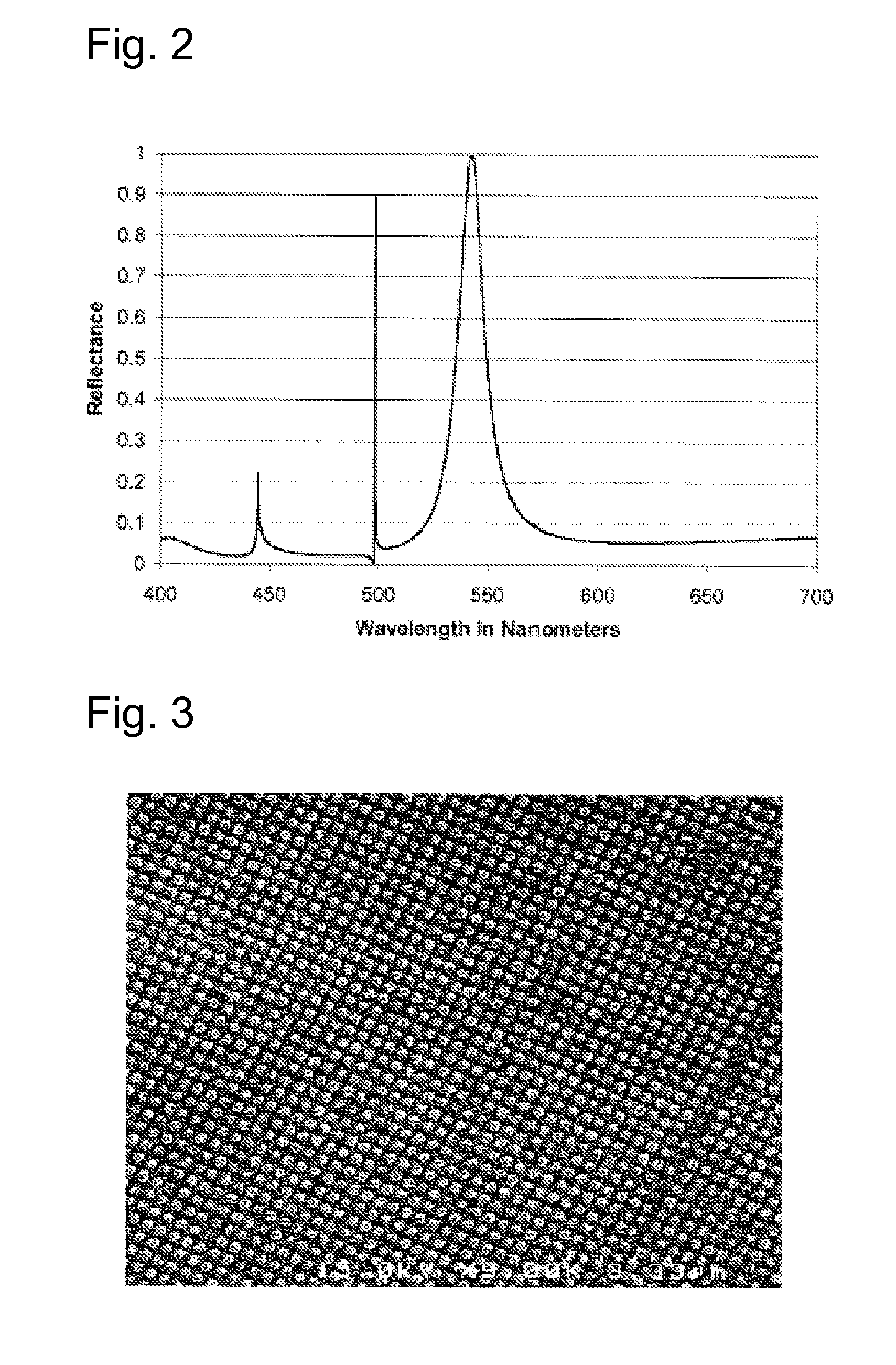Passive and active photonic crystal structures and devices
a photonic crystal and passive technology, applied in the field of passive active photonic crystal structures and devices, can solve the problems of high optical throughput and low loss, and inability to achieve high optical throughput and low loss, and achieve the effect of modulating the intensity of the input optical beam
- Summary
- Abstract
- Description
- Claims
- Application Information
AI Technical Summary
Benefits of technology
Problems solved by technology
Method used
Image
Examples
example 1
Photonic Crystal Wavelength-Selective Tunable Filters for Laser Eye Shielding
1.A Summary of Technical Objectives
[0132]The rapid development of laser technology has made portable laser systems with high power and energy widely available for applications in communication, scientific research, and manufacturing. Unfortunately, these laser systems have also been employed as a means for disabling soldiers and weapon systems by inflicting damage to human eyes and photosensors. Therefore, the development of countermeasures that can limit the effectiveness of laser weapons against these targets is an important area of research. The goal of certain embodiments of the present invention is to develop of laser eye shielding technology that is capable of reflecting particular wavelengths of laser light with nearly 100% efficiency while still enabling the soldier to see out from the shield at other wavelengths. Additionally, the laser eye shield should be capable of rapidly responding to the thre...
example 2
Optically Tunable Photonic Crystal Reflectance Filter
[0155]It is an objective of the present invention to provide dynamic photonic crystals having a tunable photonic band gap with a selectively adjustable frequency distribution. In this example, we demonstrate a photonic crystal structure whose properties are tunable with laser illumination through the incorporation of a nonlinear dye. Laser illumination causes a change in the bulk refractive index of the dye-doped portion of the structure, leading to controlled tuning of the photonic crystal reflectance spectrum. Changes in the refractive index of dye-doped regions are proportional to the intensity of the incident laser beam, and are as high as Δn=0.09. The reflectance tuning effect is completely reversible upon termination of laser illumination.
2.A. Introduction
[0156]The nonlinear optical properties of azobenzene dyes have been extensively studied in recent years. These materials are very attractive due to the fact that large chan...
PUM
 Login to View More
Login to View More Abstract
Description
Claims
Application Information
 Login to View More
Login to View More - R&D
- Intellectual Property
- Life Sciences
- Materials
- Tech Scout
- Unparalleled Data Quality
- Higher Quality Content
- 60% Fewer Hallucinations
Browse by: Latest US Patents, China's latest patents, Technical Efficacy Thesaurus, Application Domain, Technology Topic, Popular Technical Reports.
© 2025 PatSnap. All rights reserved.Legal|Privacy policy|Modern Slavery Act Transparency Statement|Sitemap|About US| Contact US: help@patsnap.com



